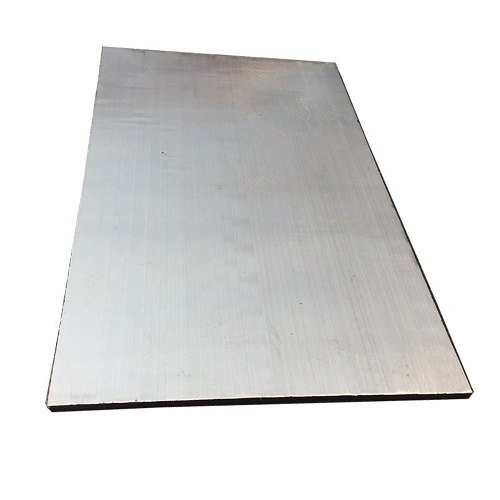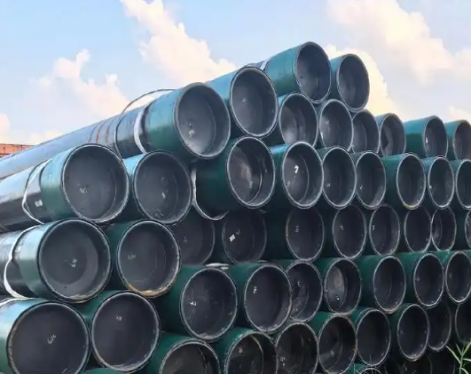During the production and processing of stainless steel plates, various types of damage and impurities may be left on the surface. These foreign objects not only affect the appearance of the stainless steel sheets but may also impact the quality of the final product. Therefore, it is essential to take appropriate cleaning measures. Below are some common types of stainless steel sheets surface damage and their cleaning methods.
These substances can lead to rusting or corrosion of the stainless steel sheet and must be removed. Floating iron powder is usually removed along with dust, but other sources of iron on the surface include using ordinary carbon steel wire brushes, sand, glass beads, or other abrasives for shot peening, or grinding non-stainless steel products near stainless steel parts. If protective measures are not taken during cutting or lifting, iron from steel wires, lifting equipment, and workbenches can easily embed into the surface.
To prevent the accumulation of process lubricants or by-products, it is necessary to mechanically clean scratches or other rough surfaces, such as by dry grinding.
When stainless steel sheets are exposed to high temperatures in the air during welding or grinding, a chromium oxide heat discoloration can form on both sides of the weld, the underside, and the bottom. This color, which can appear in rainbow, blue, purple, light yellow, or brown shades depending on the thickness, indicates a reduction in chromium content on the surface, reducing corrosion resistance. In such cases, it is necessary to remove the heat discoloration and other oxide layers and also clean the underlying chromium-depleted metal layer.
If rust spots are observed on the surface before processing, it indicates severe contamination. These must be removed before use, and the cleanliness can be verified by iron and water tests.
Grinding and machining can cause surface roughness, leaving grooves, overlaps, and burrs that may be too deep to be cleaned by pickling, electro-polishing, or shot peening.
When an arc is struck on the surface of a stainless steel sheet, it can cause rough surface defects that damage the protective film and leave potential sources of corrosion. The arc should be initiated on an already welded seam or on the side of a weld joint and then the mark should be melted into the weld.
Improper welding techniques can lead to spatter. Adjusting welding parameters and using anti-spatter agents can reduce the adhesion of spatter, making it easier to clean after welding.
Welding processes such as manual welding, flux-cored arc welding, and submerged arc welding can leave small flux particles on the surface, which are difficult to remove with common cleaning methods. Mechanical cleaning methods can remove these particles to prevent crevice corrosion.
Defects such as undercutting, lack of fusion, clustered porosity, and cracks can weaken the joint's strength and cause crevice corrosion. The solution is to re-weld or grind and re-weld after repair.
Grease, oil stains, and even fingerprints can become sources of local corrosion and affect the effectiveness of chemical and electrochemical cleaning. They must be completely cleaned using solvents or acidic chemical cleaning agents.
When removing tape or protective paper, residual adhesive may be left behind. If it has not hardened, it can be removed with organic solvents; if it has hardened, it may require mechanical cleaning with fine abrasives.
These marks have a similar effect to oil and grease and can usually be cleaned with a brush, clean water, or alkaline cleaning agents, or washed with high-pressure water or steam.
By employing the above methods, foreign objects and damage on the surface of stainless steel plates can be effectively removed, ensuring their quality and integrity.
(1)Dust
Dust from the processing site will inevitably settle on the surface of stainless steel sheets, which can be removed by washing with clean water or an alkaline solution. For stubborn dirt, high-pressure water or steam cleaning is more effective.
(2)Floating Iron Powder or Embedded Iron
These substances can lead to rusting or corrosion of the stainless steel sheet and must be removed. Floating iron powder is usually removed along with dust, but other sources of iron on the surface include using ordinary carbon steel wire brushes, sand, glass beads, or other abrasives for shot peening, or grinding non-stainless steel products near stainless steel parts. If protective measures are not taken during cutting or lifting, iron from steel wires, lifting equipment, and workbenches can easily embed into the surface.
(3)Scratches
To prevent the accumulation of process lubricants or by-products, it is necessary to mechanically clean scratches or other rough surfaces, such as by dry grinding.

(4)Heat Discoloration and Oxide Layers
When stainless steel sheets are exposed to high temperatures in the air during welding or grinding, a chromium oxide heat discoloration can form on both sides of the weld, the underside, and the bottom. This color, which can appear in rainbow, blue, purple, light yellow, or brown shades depending on the thickness, indicates a reduction in chromium content on the surface, reducing corrosion resistance. In such cases, it is necessary to remove the heat discoloration and other oxide layers and also clean the underlying chromium-depleted metal layer.
(5)Rust Spots
If rust spots are observed on the surface before processing, it indicates severe contamination. These must be removed before use, and the cleanliness can be verified by iron and water tests.
(6)Surface Roughness
Grinding and machining can cause surface roughness, leaving grooves, overlaps, and burrs that may be too deep to be cleaned by pickling, electro-polishing, or shot peening.
(7)Welding Arc Strike Marks
When an arc is struck on the surface of a stainless steel sheet, it can cause rough surface defects that damage the protective film and leave potential sources of corrosion. The arc should be initiated on an already welded seam or on the side of a weld joint and then the mark should be melted into the weld.
(8)Weld Spatter
Improper welding techniques can lead to spatter. Adjusting welding parameters and using anti-spatter agents can reduce the adhesion of spatter, making it easier to clean after welding.
(9)Flux Inclusions
Welding processes such as manual welding, flux-cored arc welding, and submerged arc welding can leave small flux particles on the surface, which are difficult to remove with common cleaning methods. Mechanical cleaning methods can remove these particles to prevent crevice corrosion.
(10)Welding Defects
Defects such as undercutting, lack of fusion, clustered porosity, and cracks can weaken the joint's strength and cause crevice corrosion. The solution is to re-weld or grind and re-weld after repair.
(11)Grease and Oil Stains
Grease, oil stains, and even fingerprints can become sources of local corrosion and affect the effectiveness of chemical and electrochemical cleaning. They must be completely cleaned using solvents or acidic chemical cleaning agents.
(12)Residual Adhesive
When removing tape or protective paper, residual adhesive may be left behind. If it has not hardened, it can be removed with organic solvents; if it has hardened, it may require mechanical cleaning with fine abrasives.
(13)Paint, Chalk, or Marker Marks
These marks have a similar effect to oil and grease and can usually be cleaned with a brush, clean water, or alkaline cleaning agents, or washed with high-pressure water or steam.By employing the above methods, foreign objects and damage on the surface of stainless steel plates can be effectively removed, ensuring their quality and integrity.









